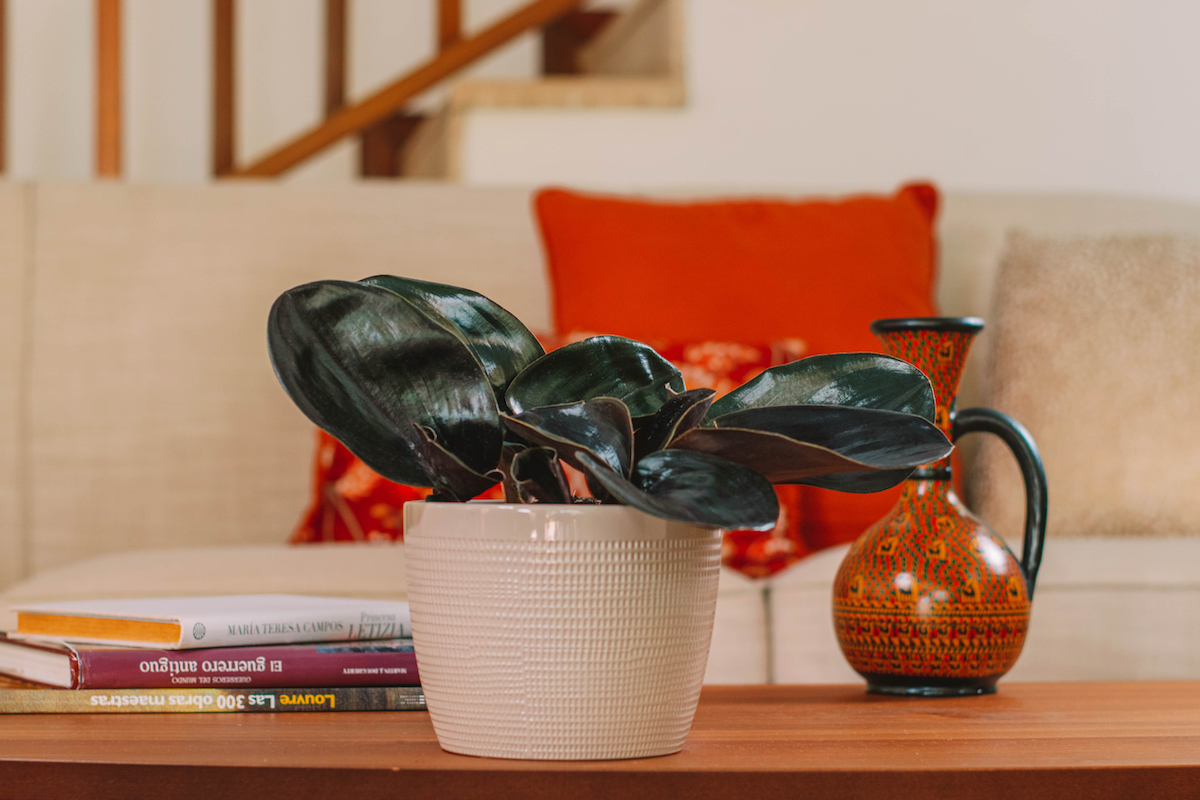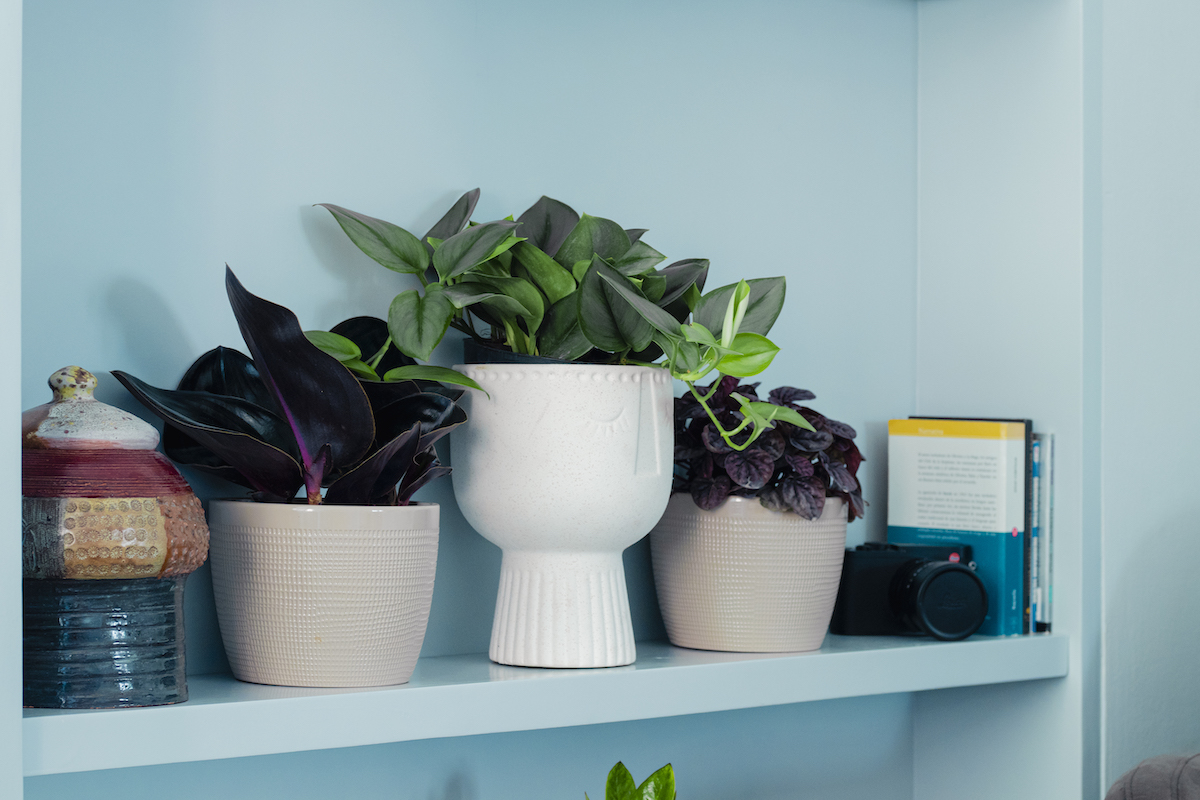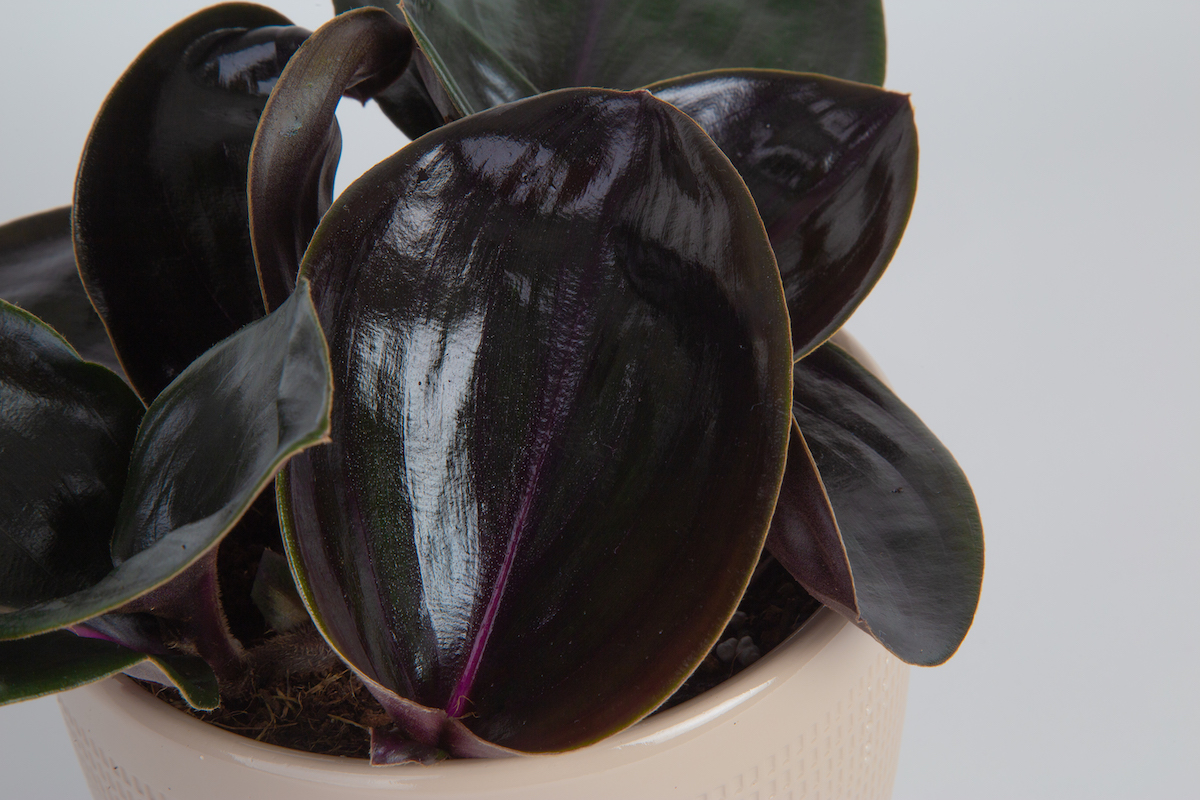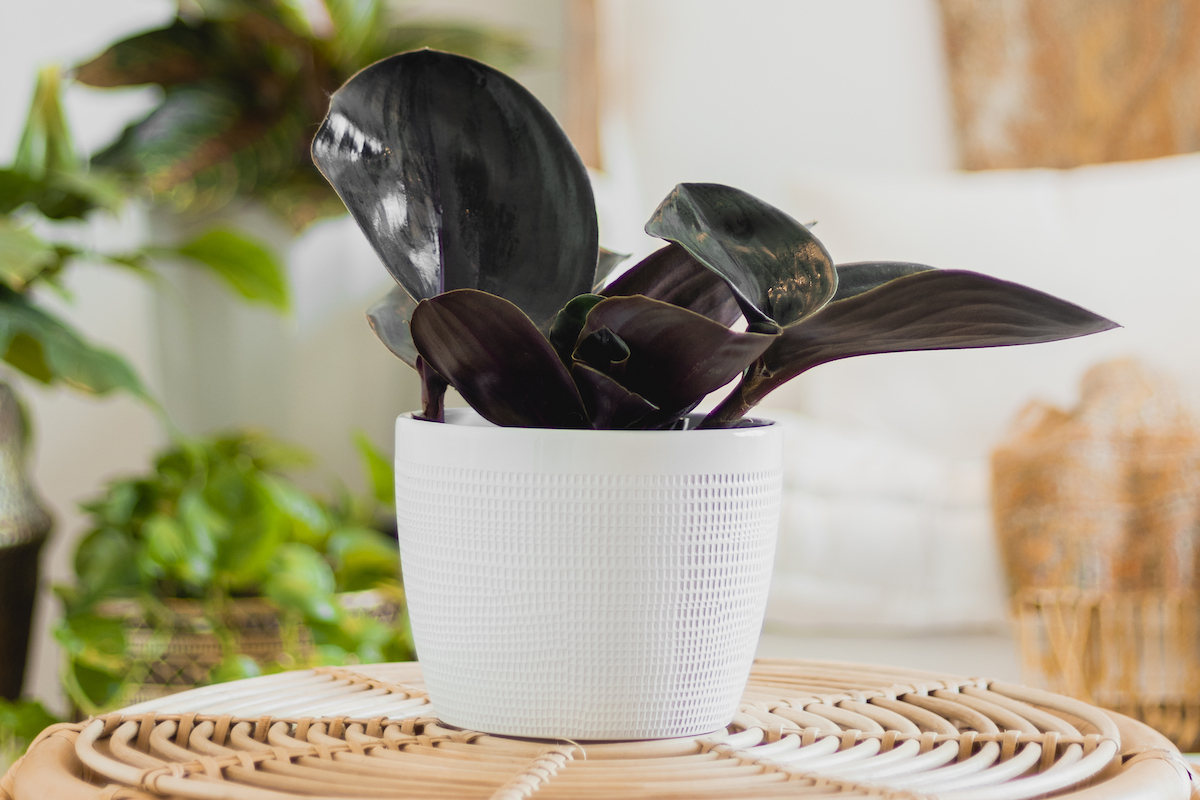

We may earn revenue from the products available on this page and participate in affiliate programs. Learn More ›
Houseplant varieties change constantly, to the delight of indoor plant enthusiasts. Plant breeders are continuously looking to modify plants’ features to make them more exciting for customers. This year, houseplant fans have something to get really excited about: Geogenanthus ciliatus, one of the first new houseplant genera to be introduced in decades.
What is Geogenanthus?
Although its official botanical name is Geogenanthus ciliatus, its common name is “Geo.” The plant was released earlier this year by Costa Farms. Geo is in the spiderwort (Commelinaceae) family and is related to many other popular houseplants, such as inch plants (Tradescantia), teddy bear vine (Cyanotis), and oyster plant (Rhoeo).
The genus Geogenanthus only contains three species and until this year, only two of them have been available for houseplant trade. G. ciliatus is now available in many garden centers and online through Costa Farms, thanks to plant hunter Mike Rimland. He came across Geo while plant-hunting in Southeast Asia, though the plant comes from South America.
Geo caused a buzz at this year’s Tropical Plant International Expo (TPIE), a trade event showcasing the latest trends in foliage, florals, and tropicals. Attendees voted on their favorite plants and products in the TPIE New Plants and Products Showcase, and Geo won “Best New Foliage Plant” for 2022.
RELATED: 20 Huge Houseplants That Make a Statement

Geo’s Features
The two standout features of Geo are its color and texture. The tops of the leaves are a glossy dark green, whereas the undersides are velvety, dark, and purple-black. Geo’s leaves are thick, making it perfect for an indoor environment. Plants with thicker leaves tend to transpire (lose moisture) more slowly, so they are less likely to get brown edges.
Geo grows naturally in a compact mound form, making it an attractive addition to a tabletop or larger terrarium. The houseplant can grow up to 24 inches wide, and it may produce small purplish blooms if all its growing conditions are met.

How to Care for Geogenanthus
Geo is easy to grow and maintain as long as you give it what it needs.
Light: Geo needs medium-to-bright indirect light and prefers natural light over artificial light. Direct sunlight will burn its deep purple foliage.
Water: Geo likes soil on the moist side, but not soggy. The plant will wilt dramatically if it starts to get too dry but it bounces back quickly when it’s watered. Check it two to three times per week and add water every time the top of the soil feels dry to the touch.
Humidity: Geo prefers above-average humidity but will tolerate most indoor humidity levels. If your home is dry, mist it in the morning to allow the water to evaporate throughout the day, creating a humid environment. Alternatively, place the plant on a tray lined with an inch of pebbles. Fill the tray with water halfway up the pebbles to increase the humidity around the plant.
Feeding: Thankfully, Geo doesn’t require regular feeding to thrive, although fertilizing regularly will allow it to push out more growth. An all-purpose indoor houseplant fertilizer is more than enough for Geo.
Pruning: Geo requires little pruning. It grows naturally in a low-mounded form. Clip off any dead or yellowing leaves as needed.
Pairing: Geo’s lovely dark foliage looks excellent with Alocasia baginda ‘Silver Dragon’ or Begonia maculata. It’s perfect as a focal point plant or backdrop for smaller indoor plants.
RELATED: The Best Plants for Every Room of the House

